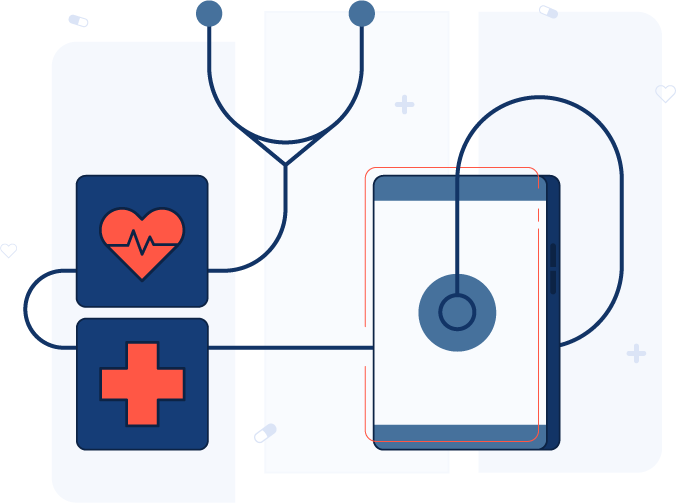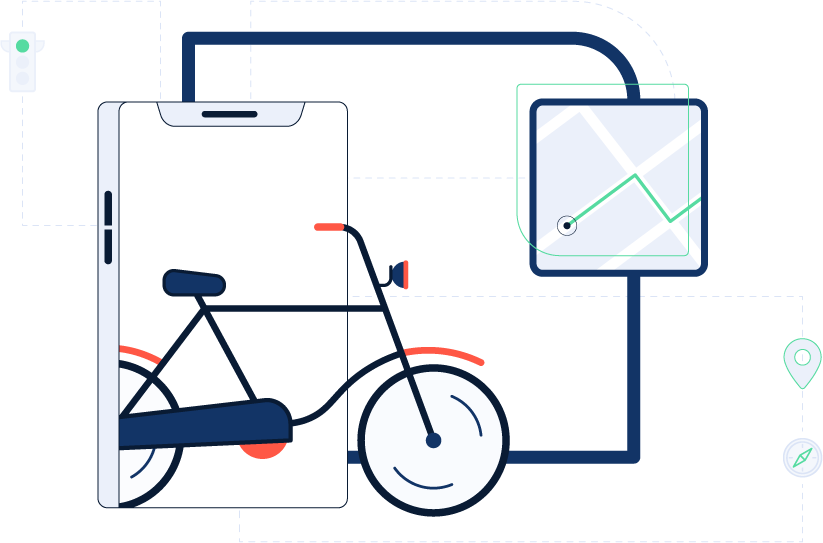Was ist IoT und wo wird es in Ihrem täglichen Leben eingesetzt?
Dive into the world of IoT: understand what it is and discover its everyday applications in your life, from smart homes to wearable tech!
Examples of IoT in Everyday Life
The Internet of Things (IoT) has emerged as a transformative force, seamlessly integrating the physical and digital worlds to enhance the way we live and interact with the world. In IoT applications, devices often rely on communication technologies, including various connectivity options such as Wi-Fi, Bluetooth, and cellular networks, where different types of SIM cards play a crucial role.
Why is IoT important?
At its core, IoT refers to the vast network of interconnected devices, sensors, and systems that communicate with each other through the Internet, facilitating data exchange and intelligent decision-making. The importance of the Internet of Things extends beyond traditional computing devices like computers and smartphones, encompassing everyday objects embedded with sensors and connectivity, ranging from household appliances to industrial machinery.
What you’ll find in this guide:
Enhancing Lives: The Positive Impact of Industrial IoT
IoT in Healthcare
IoT and Smart Home
Smart Transportation
IoT in Wearables
Enhancing Lives:
The Positive Impact of Industrial IoT
So, why is IoT important? In the landscape of technological progress, the Industrial Internet of Things (IIoT) stands out as a transformative force, bringing about substantial enhancements in various facets of our lives. Here's a concise list of key areas where Industrial IoT is making a positive impact on our lives:
Manufacturing Efficiency: Fine-tuning production processes and reducing downtime.
Predictive Maintenance: Forecasting equipment failures for preventive actions.
Healthcare Transformation: Remote monitoring and personalized care through smart medical devices.
Transportation Optimization: Fleet management for improved efficiency, fuel savings, and safety.
As Industrial IoT continues to evolve and integrate into various industries, its role in creating a more connected, efficient, and responsive world becomes increasingly evident, promising ongoing improvements in our everyday experiences. Let’s talk about IoT examples in daily life in more detail.
IoT in Healthcare
The connection between technology and healthcare has given rise to groundbreaking advancements, with the Internet of Things (IoT) playing a pivotal role in transforming how medical services are delivered and experienced. IoT in healthcare involves the integration of connected devices, sensors, and data analytics to enhance patient care, streamline processes, and improve overall health outcomes. This mix of healthcare and technology shows us the importance of IoT.
Pros of IoT in Healthcare:
Remote Patient Monitoring: IoT devices enable continuous monitoring of patients' vital signs and health metrics, allowing healthcare professionals to track and manage chronic conditions remotely. This can lead to early intervention, reduced hospital admissions, and improved patient outcomes.
Real-Time Data Collection: The real-time collection of patient data through IoT devices provides healthcare providers with accurate and up-to-date information. This facilitates quicker decision-making, personalized treatment plans, and a more proactive approach to healthcare.
Enhanced Patient Engagement: IoT encourages patient engagement by providing individuals with access to their health data and promoting self-management. Wearable devices and health apps empower patients to take an active role in their well-being, fostering a collaborative relationship with healthcare providers.
Efficient Asset Management: Hospitals can utilize IoT for tracking and managing medical equipment, optimizing inventory, and ensuring timely maintenance. This leads to improved operational efficiency, reduced costs, and better resource utilization.
Cons of IoT in Healthcare:
Compatibility issues: Compatibility and interoperability of different IoT devices and platforms remains a challenge. Ensuring seamless integration and communication between diverse systems is essential for a coherent and efficient healthcare infrastructure.
Data Overload: The massive amount of data generated by IoT integration can overwhelm healthcare systems. Effective data management and analytics are needed to obtain meaningful information without causing information overload for healthcare professionals.
IoT importance in healthcare is priceless. It represents a transformative leap towards a more connected and patient-centric healthcare ecosystem. As IoT in healthcare continues to evolve, finding the right balance between innovation and safeguarding patient privacy will be essential to unlock the full potential of IoT in shaping the future of healthcare.
IoT and Smart Home
The fusion of IoT technology with the concept of home automation has ushered in a new era of convenience and efficiency. With interconnected devices and sensors, smart homes can be controlled and monitored remotely, offering a heightened level of security. However, the integration of IoT into smart home security systems brings both advantages and challenges, shaping the landscape of modern home management.
Pros of IoT in Smart Home Security:
Remote Monitoring: The importance of IoT in smart home security is shown in the ability to remotely monitor the home. Users can access real-time video feeds, receive alerts, thus enhancing overall awareness and control.
Automation and Integration: IoT allows for seamless integration and automation of various security features. Smart locks, cameras, and alarms can work in tandem, triggered by predefined conditions or user commands, providing a comprehensive and responsive security ecosystem.
Customization and User-Friendly Interface: Smart home security systems are often designed with user-friendly interfaces, enabling easy customization of settings. Users can tailor security protocols, schedules, and access permissions according to their preferences.
Cons of IoT in Smart Home Security:
Privacy Concerns: The increased connectivity of devices raises concerns about personal data security. Hacked devices or insecure networks could compromise sensitive information, posing a risk to the privacy and security of homeowners.
Cost and Maintenance: The initial cost of implementing a comprehensive IoT-based smart home security system can be high. Additionally, regular maintenance and updates are crucial to ensuring the ongoing effectiveness of security protocols, which may pose additional costs and efforts for users.
The integration of IoT into smart home security offers undeniable advantages in terms of convenience, automation, and remote monitoring. As technology continues to advance, finding a balance between innovation and safeguarding against potential risks becomes essential for ensuring the seamless and secure operation of IoT-enabled smart homes.
Smart Transportation
The advent of IoT has not only revolutionized our homes but has also extended its transformative reach to the world of personal transportation. The connection of IoT with smart driving technologies has led to innovative solutions that improve safety, vehicle efficiency and the overall driving experience. The integration of the Internet of Things into intelligent driving grows every year. Let’s find out why IoT is important for comfortable transportation.
Pros of IoT in Smart Driving:
Vehicle Connectivity: IoT enables seamless connectivity between vehicles and the surrounding infrastructure, fostering real-time communication. This connectivity facilitates features such as traffic management, predictive maintenance, and automated emergency services.
Enhanced Safety: Smart driving solutions leverage IoT for advanced driver assistance systems (ADAS) that include features like collision avoidance, environmental monitoring, and adaptive cruise control. These technologies contribute to a safer driving environment and reduce the risk of accidents.
Efficient Traffic Management: IoT-enabled smart traffic management systems can optimize traffic flow, reduce congestion, and enhance overall transportation efficiency. This contributes to fuel savings, reduced emissions, and improved urban mobility.
Remote Vehicle Monitoring: IoT allows for remote monitoring of vehicles, enabling owners to track their vehicle's location, status, and performance. This feature enhances security, aids in recovery in case of theft, and provides valuable insights for maintenance.
Data-Driven Insights: The data generated by IoT sensors in smart driving systems offer valuable insights for both individual drivers and city planners. This data can be used to optimize traffic patterns, plan infrastructure improvements, and tailor transportation solutions to specific needs.
The importance of IoT promises a new era of connectivity, safety, and efficiency in personal transportation. It is a big step towards smart cities. From advanced safety features to efficient traffic management, the benefits of smart driving technologies underscore their potential to revolutionize how we navigate our roads.
IoT in Wearables
It’s hard to assess the importance of IoT integration into wearables, which has sparked a revolution in personal health monitoring and lifestyle management. Wearable devices equipped with sensors and connectivity features have become increasingly sophisticated, allowing individuals to track and analyze various aspects of their well-being. The seamless synergy between IoT and wearables not only empowers users with real-time insights but also facilitates a more holistic and proactive approach to health and fitness.
Pros of IoT in Wearables:
Health Monitoring: IoT-enabled wearable health devices offer real-time monitoring of vital signs, physical activity, and sleep patterns. This continuous data collection allows users to gain insights into their overall health, detect potential issues early on, and make informed decisions about their well-being.
Personalized Fitness Tracking: Wearables equipped with IoT technology provide personalized fitness tracking by capturing data on exercise routines, calories burned, and activity levels. This information helps users set and achieve fitness goals, promoting a more active and healthier lifestyle.
Remote Patient Care: In the healthcare sector, IoT-enabled wearables facilitate remote patient monitoring. Healthcare providers can receive real-time data on patients' health status, enabling timely interventions, reducing hospital visits, and enhancing overall patient care, particularly for individuals with chronic conditions.
Integration with Smart Devices: Wearables often seamlessly integrate with other smart devices, creating a connected ecosystem. For example, fitness data can sync with smartphones or health apps, fostering a cohesive and user-friendly experience.
Wearable Safety Features: Some wearables incorporate safety features, such as fall detection and emergency alerts. This is especially beneficial for the elderly or individuals with specific health concerns, providing them and their caregivers with added peace of mind.
So, why is IoT so important?
The integration of the Internet of Things (IoT) into various aspects of our lives, from healthcare and smart homes to wearables, represents a transformative force shaping the way we live, work, and interact with the world.
The seamless connectivity and data exchange facilitated by IoT has given rise to a more intelligent and digital lifestyle, offering unprecedented levels of convenience, efficiency, and personalization.





